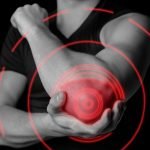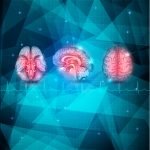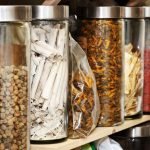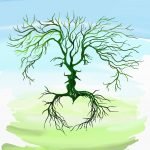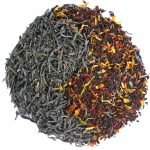Chlorosis, or Poverty of the Blood
Sussanna Czeranko, ND
The chlorosis of young girls has become a fashion. There is scarcely one family with grown up daughters of which not one, at least, is suffering of chlorosis.
Benedict Lust 1908, 6
Nervousness and chlorosis or anaemia, often go hand in hand. The first thing to do is to remove the cause, which, in many cases, is tight lacing, the wearing of stays [corsets], want of nutritious food, too little exercise out of doors, general weakening and softening of the system.
Sebastian Kneipp 1902, 185
Do not wear corsets….We may fool ourselves and part of the public but never the organs that suffer for the proper amount of space, because we have not the courage to live a natural life.
-
K. Stretch 1916, 101-2
You’ve Come a Long Way, Baby!
The phrase “You’ve come a long way baby,” broadcast through the cigarette advertising world some years back, pointed out the supposed huge strides in the equity of women but of course neglected to include new data about the inevitable and accompanying surge in female lung cancer. Pernicious in a similar way was the dangerous manipulation of women’s fashion and clothing styles to the detriment of their health. The archaic condition “chlorosis” was an unnecessary state arising from those fads. A century ago, a woman’s clothing, her work opportunities and her living conditions collectively generated powerful effects on her health. A prevailing lack of understanding about women’s actual medical needs grew from the paucity of information and research not only about the inappropriateness of, for example, the use of corsets or the presenting condition of chlorosis but also about women’s health overall. Living in this medical vacuum, women suffered. The conspicuous absence of women physicians administering to women at the turn of the last century compounded the serious misinformation and dearth of data.
In this environment, a popular and trivializing diagnosis frequently projected onto women was characterized by terms such as hysteria and nerves, which fell under the umbrella of neurasthenia. Another common female diagnosis was “green sickness,” or chlorosis, “the twin sister of anemia” (Bilz 1898b, 1540).
Chlorosis was widespread among young women, affecting the delicate and not sparing the strong. In the first decade of the last century, Dr. Seibert found that chlorosis affected those in “the higher strata of society” and remarked that “servant girls, as a rule, remain immune from it, while seamstresses, milliners, girls who work in factories, mostly those who have to live in poorly ventilated rooms and by their work are obliged to remain in an unnatural position, suffer from this sickness” (79). Authors such as Kuhne and Lust also noted that chlorosis affected all classes of women: “Neither poor or rich, neither young or old, are free from these disorders” (Kuhne 1918b, 352).
The symptoms of chlorosis experienced by young women resemble those of anemia. Lust wrote: “The first symptoms of chlorosis are the pale, almost waxen color of the gums and the inner eyelids; languid physiognomy, heavy walk, palpitations of the heart, somnolence, sense of discomfort and disinclination for work” (1908). The weakness felt in these young women might also be accompanied by “palpitations of the heart with the least exertion, a feeling of oppression, lethargy, and aversion to a meat diet” (Bilz 1898a, 514). As Kuhne explained it, chlorosis “render[s] people mentally and physically unfit…with a loss of appetite and the bowels no longer act regularly” (1918b, 352).
Blood quality was paramount in understanding the full picture of chlorosis. Those with chlorosis showed clearly “the effects of poverty of blood” (Kneipp 1891, 234). Chlorosis affected menstruation, resulting in dysmenorrhea or amenorrhea, with “the bleeding…most irregular, or leucorrhea appears, which greatly weakens the patient” (Lust 1908). The blood flow could be scanty or profuse and of a pale red color (Lust 1920, 233). Menstrual cramps caused by “sedentary occupation or the corset contribute to the prevention of the right blood circulation” or blood stagnation (Seibert 1908, 80). Kuhne saw irregularity and disturbances in menstruation as “an unmistakable proof of the presence of an encumbrance of morbid matter” (1918a, 636).
Lust further explained, “Often chlorosis is accompanied with convulsive attacks” (1908). Kuhne saw patients with chlorosis also experiencing epileptic fits: “Imperfect digestion in conjunction with insufficient activity of the skin and lungs were the sole causes of these diseases” (1918b, 355). By treating the chlorosis, the fits were also cured. The causes of chlorosis were multifold, but a huge factor was the impulse to achieve a notorious hourglass figure and then have to endure the consequences of the methods (Figure).
Why Was the Corset Worn? To Improve the Figure!
Trim tiny waists are as coveted by women today as a century ago. The moment we see and feel the love handles growing on our bodies, we will stoop to starving, counting calories, human chorionic gonadotropin diets, exercise or anything to return our tiny waists. A century ago, the corset was quite effective in achieving this goal: “There has never been invented an instrument to a sure, though slow destruction of the body as the corset” (Wagner 13). The corset was designed to create an hourglass figure but in doing so also “press[ed] the vital organs out of place, disfiguring the body, prevent[ing] breathing, caus[ing] stomach troubles, cancers or tumors of the breast, defective circulation, ill health and maternal injury” (Neff). “No wonder women have spasms, nervous prostrations, fits,” wrote Dr. Neff in his urging women to discard the corset: “The natural form of the body cannot be improved upon by this health destroying corset, that disfigures the body until its natural shape is lost.” Women wearing the corset would find themselves “as if they should fall to pieces if the corset was removed” (Gleason 156). Like chlorosis and neurasthenia of the day, women’s use of the corset provoked much discussion in the naturopathic profession.
Dr. Gleason was a female family physician in the 19th century who was disgusted with corset use, claiming that “tight clothing seems to squeeze out all common sense” (157). She wrote: “[I]f the bottom of the waist is snugly bound, the diaphragm is limited in its action, hence the lower portion of the lungs are not fully inflated. The stomach and liver lack their proper play-room and needed motion, and with both digestion and respiration impeded, there is no power to keep health, in any part of the body” (Gleason 157). Berggren added that tight clothing and lacing “hindered the proper return of lymph and venous blood from the parts below the chest” (344). It is no wonder that women in the late 19th and early 20th centuries would report many ailments that soon characterized them as hysterical.
Not only did these women suffer wearing these “barbaric and inhuman forms of dress,” but their children inherited ill health as well. Berggren wrote: “The pelvic congestion, as well as pressure on these organs, aids powerfully in predisposing to, if not, indeed, actually causing disease of these organs not only for the individuals themselves, but also for future generations” (345). Lust noted that young women having children at a young age was detrimental to creating healthy children. In his view, if “government should prohibit marriage between too young people, we would have less distorted conditions, less nervous women and more healthy children” (Lust 1908).
The treatment of chlorosis followed sound nature cure principles and particularly addressed the cause so that the symptoms would take care of themselves. Recognizing that a sedentary lifestyle indoors contributed to chlorosis in young women, Lust prescribed that “much exercise and no sedentary occupation [were] essential” to remedy chlorosis (1908). Seibert affirmed Lust’s counsel that “all young girls, without any exception at all, from the princess down to the lowest girl of the people should assist a housekeeper in all that work done by servant girls” (Seibert 79). He continued: “Work, physical and intellectual culture of the most simple kind, is the best remedy against chlorosis and bodily and mental weakness” (Seibert 80).
Kneipp and his followers achieved great success in treating patients with chlorosis who presented with pale skin, were thin and lacked vital heat. This was diagnosed as poor blood, and “the first object then was to stimulate their appetite and circulation which [Kneipp] accomplished for the most part by partial washings or affusions” (Bilz 1898a, 734). Kneipp recommended plenty of fresh air and exposure to “the open air as much as possible and if they are in the room, this should be but sparingly heated” (1891, 234). As our current generation frets about vitamin D deficiencies, while spending increasingly more time indoors engaged in sedentary work, we could certainly heed Kneipp’s advice.
The Kneipp cure for chlorosis in individuals with a strong constitution consisted of cold sitz baths, which corrected “weak digestion and regulate the circulation of the blood” (1891, 48). The duration of the cold sitz bath was 1 to 2 minutes, and the best time to be taken was at night, which aided sleep. For those who were very weak and had little vital heat, he advised that “the water applications should be gentle at first; in some cases, where cold feet are one of the symptoms, warm foot baths with salt and wood ashes” were to be used (Bilz 1898a, 754). Kneipp recommended that anemic women should walk “barefooted in the house and in the open air during summer and autumn” (1902, 186).
Another Kneipp treatment that was used by Bilz at his sanitarium were hot compresses. Bilz wrote:
[T]he first thing is to produce perspiration. If that can be done, the patient is saved. A coarse cloth, folded several times, dipped in hot water and well wrung out, is laid as hot as possible on the stomach, and well covered up. In twenty minutes perspiration will generally take place. The cloth should then at once be again wrung out in hot water, and applied as before, in order to increase the perspiration. The whole body now perspires, the spasms cease and the patient feels better. (1898a, 754)
Kneipp taught that “Good and sufficient blood is the first condition of health.” Healthy menses, in his view, did “not last longer than four or five days…. If the ‘flooding’ lasts over four days, a sitz bath must be taken on the fifth day of 79°F for ten minutes. During this time the body must be massaged or cooled by a douche” (Wagner 14). If the loss of blood was excessive, rather than cold sitz baths, “hot sitz baths of 96-104°F must be taken” (Wagner 14). For the treatment of dysmenorrhea, sitz bathing was recommended, “[a]t first using water at about 80°F, gradually using cooler water until 60°F is found comfortable” (Stretch 101).
Fresh Vegetables
“The regulars” used chalybeate or iron in various forms or quinine to treat chlorosis. Early NDs condemned the use of “artificial preparations for the purpose of ‘feeding up’ the patient” (Kuhne 1899, 234) and advocated “a non-stimulating diet…[of] fresh vegetables, especially spinach and peas, rich in nutritive salts which strengthen bones and nerves, lettuce prepared with lemon instead of with vinegar” (Wagner 13). To build up the blood, Kneipp advised that “powdered chalk or bone meal should be taken internally in water or vinegar and water twice a day, morning and evening…. Coffee, tea, beer and wine are as much to be eschewed as the wretched powdered iron which ruins the stomach and often also the teeth” (1902, 186). Like many of his colleagues, Kuhne believed that chlorosis could “be cured only by expelling the foreign matter from the system, but never by medicaments” (1918b, 356).
Dr. Bilz’s sanitarium in Radebeul, Germany, had a specific protocol for girls with chlorosis and anemia. The day began early in the morning with a barefooted walk in the fresh air, followed by the customary ablution (range, 72-84°F). After this, breakfast was served, consisting of crushed wheat. For those who did not eat this cereal breakfast, alternative options included a cup of cacao or sour milk. Lunch would include vegetables, some meat and fruit with a glass of wine taken a half hour before lunch. The afternoon snack consisted of cocoa or milk, and the evening meal consisted of porridge, lettuce and fruit (Wagner 13-14).
Today, anemia and its related lassitude, weakness and debility are replaced by obesity, rampant vitamin D deficiencies and long hours sitting indoors in front of computers or TV. In too many ways so familiar to NDs, who are aware of the long traditions of nature cure and the conditions patients bring forward, we have not moved very far along the continuum of health and exhibit presenting conditions that are similar to those who came before us, albeit for new reasons.
Go out, take off your shoes and take a walk outside, just as Father Kneipp would have recommended.
 Sussanna Czeranko, ND does historical research in the NCNM archive collection in the rare books room. She has just finished editing In Their Words: Vaccination, a Naturopathic Historical Perspective. She is a qualified trainer currently teaching NDs interested in Buteyko breathing.
Sussanna Czeranko, ND does historical research in the NCNM archive collection in the rare books room. She has just finished editing In Their Words: Vaccination, a Naturopathic Historical Perspective. She is a qualified trainer currently teaching NDs interested in Buteyko breathing.
References
Berggren, T. “Chest Expansion.” Herald of Health and the Naturopath. 23 (4), 1918: 343-8.
Bilz, F. E. Bilz: The Natural Method of Healing. Vol. 1. Leipzig: F. E. Bilz Publishing, 1898a.
Bilz, F. E. Bilz: The Natural Method of Healing. Vol. 2. Leipzig: F. E. Bilz Publishing, 1898b: 1056-2011.
Gleason, R. B. “Common Sense vs. Tight Dressing.” The Herald of Health and Physical Culture. 13 (4), 1869: 156-8.
Kneipp, S. “Diseases.” Naturopath and the Herald of Health. 3 (4), 1902: 185-7.
Kneipp, S. My Water Cure. Trans. from 62nd German ed. Bavaria: Jos. Koesel Publisher, 1891.
Kuhne, L. “Diseases of Women.” Herald of Health and the Naturopath. 18 (7), 1918a: 635-41.
Kuhne, L. The New Science of Healing. Leipzig: Louis Kuhne Publishing, 1899.
Kuhne, L. “Poverty of the Blood: Chlorosis.” Herald of Health and the Naturopath. 18 (1), 1918b: 352-7.
Lust, B. “Green Sickness or Chlorosis.” Herald of Health and the Naturopath. 25 (5), 1920.
Lust, B. “Some Remarks About Chlorosis.” The Naturopath and the Herald of Health. 9 (1), 1908: 6.
Neff, J. H. “The Corset.” The Naturopath and the Herald of Health. 15 (3), 1910: 149.
Seibert, E. “Prevention and Cure of Female Diseases by a Natural Method.” The Naturopath and the Herald of Health. 9 (3), 1908: 79-81.
Stretch, E. K. “Gynecology: Minus the Knife.” Herald of Health and the Naturopath. 21 (2), 1916: 101-2.
Wagner, O. “Lectures About Female Troubles: Held in the Kneipp Association in Bruenn.” The Naturopath and the Herald of Health. 10, 1909.




